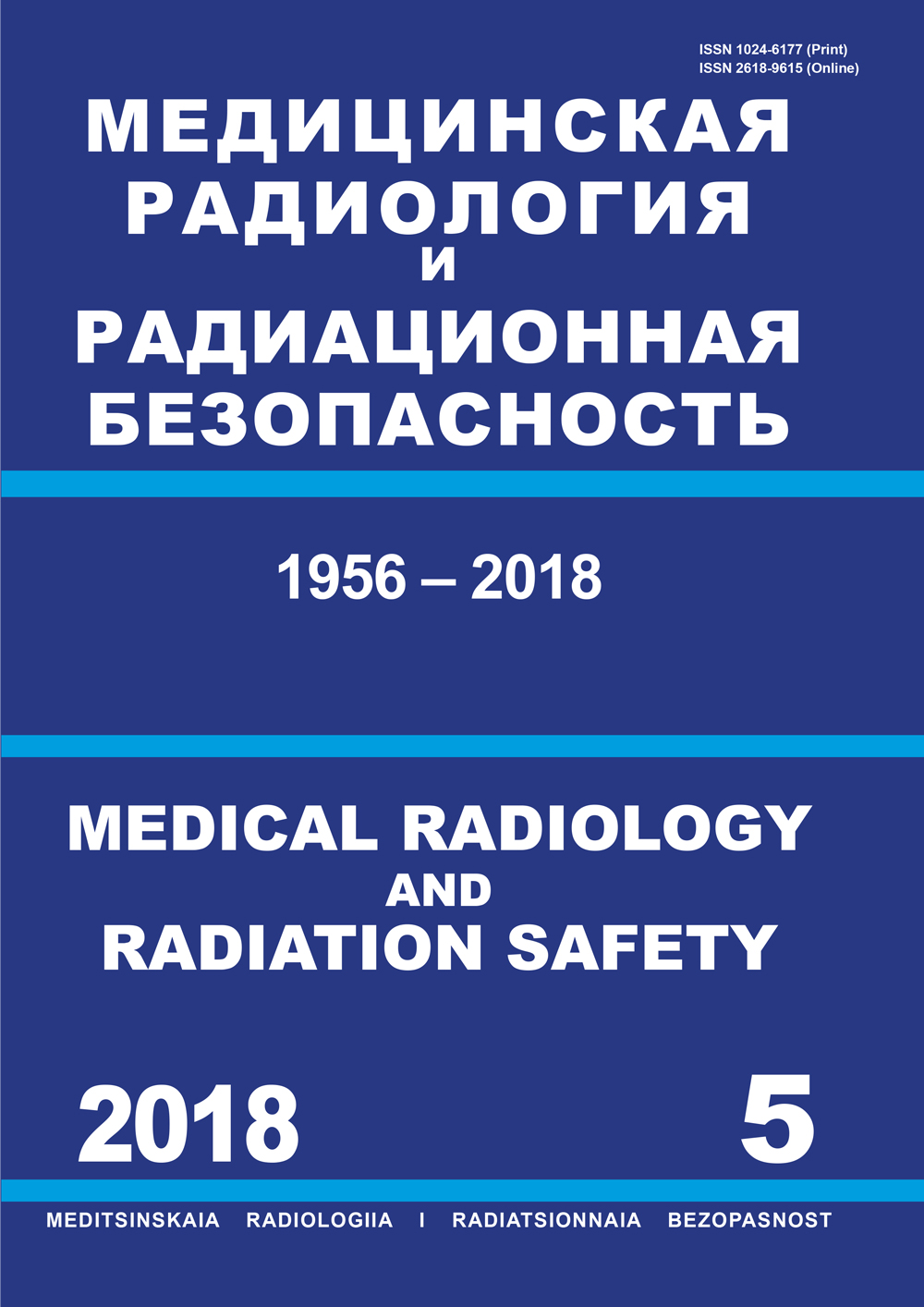Moscow, Russian Federation
Kaluga, Russian Federation
Kaluga, Russian Federation
Vladimir, Russian Federation
Kaluga, Russian Federation
Kaluga, Russian Federation
CSCSTI 76.03
CSCSTI 76.33
Russian Classification of Professions by Education 14.04.02
Russian Classification of Professions by Education 31.06.2001
Russian Classification of Professions by Education 32.08.12
Russian Classification of Professions by Education 31.08.08
Russian Library and Bibliographic Classification 51
Russian Library and Bibliographic Classification 534
Russian Trade and Bibliographic Classification 5708
Russian Trade and Bibliographic Classification 5712
Russian Trade and Bibliographic Classification 5734
Russian Trade and Bibliographic Classification 6212
Purpose: This work aims first to improve the reliability of absorbed dose calculation in critical organs of cattle during internal irradiation immediately after radiation accidents by a) improving the compartmental model of radionuclide metabolism in animal body; b) the use of precision computing technologies for modeling as the domain, and the actual radiation transport. In addition, the aim of the work is to determine the agreed values of the 131I critical dose in the cattle thyroid, leading to serious gland dysfunction and its follow-up destruction. Material and methods: To achieve aforecited goals, comprehensive studies were carried out to specify the parameters of the compartmental model, based on reliable experimental and theoretical data. Voxel technologies were applied for modeling the subject domain (thyroid gland and its environment). Finally, to solve the 131I radiation transport equation, the Monte Carlo code was applied, which takes into account the contribution of gamma and beta radiation source, and the contribution of the entire chain of secondary radiations in the dose calculation, up to the total energy dissipation. Results: As the main theoretical result, it is necessary to emphasize the conversion factor from the 131I activity, distributed uniformly in volume of the thyroid gland, to the average dose rate in the gland (Bq × Gy/s). This factor was calculated for both cows and calves in the selected domain configuration and thyroid morphology. The main practical result is a reliable estimation the lower bound of the absorbed dose in the thyroid, which in a short time leads to its destruction under internal 131I irradiation: ~300 Gy. Conclusion: Usage a compartmental model of the 131I metabolism with biokinetic parameters, received on the basis of reliable experimental data, and precise models of both the subject area and radiation transport for evaluation the dose in the cattle thyroid after the radiation accident allowed to obtain reliable values of the thyroid dose, adducting to its destruction at short notice.
radiation accident, cattle, radioactive iodine, thyroid gland, compartmental model, radiation transport, absorbed dose
1. ICRP Publication 103. The 2007 Recommendations of the International Commission on Radiological Protection. Ann. ICRP. 2007;37(2-4):1-332.
2. Budarkov VA. Justification of cattle selection as one of the reference organisms in the system of environmental protection from radiation. Radiation Biology. Radioecology. 2009;49(2):179-85. Russian.
3. France J, Kebreab E. Mathematical Modelling in Animal Nutrition. Centre for Nutrition Modelling University of Guelph. Wallingford: Biddles Ltd, King’s Lynn; 2008. 588 p.
4. Crout NMJ, Voigt G. Modeling the dynamics of radioiodine in dairy cows. J Dairy Science. 1996;79(2):254-9.
5. Smith JG, Simmonds JR. The Methodology for Assessing the Radiological Consequences of Routine Releases of Radionuclides to the Environment Used in PC-CREAM 08. HPA-RPD-058. Radiation 5. Protection Division. Chilton, Didcot, Oxfordshire; 2009. 295 p.
6. Sirotkin AN, Panchenko IYa, Tyumenev LN, et al. Comparative behavior of 131I in cows at different sources of its intake. In: Biological action of external and internal sources of radiation. Moscow: Medicine; 1972. p. 72-7. Russian.
7. Odeichuk AN. A generalized criterion for the effectiveness of forecasting models for time series in information systems. Bionica Intellecta. 2009;(1/70):113-9. Ukrainian.
8. Korneev NA, Sirotkin AN. Fundamentals of agricultural animals radioecology. Moscow. Energoatomizdat; 1987. 107 p. Russian.
9. Spirin EV, Lazarev NM, Sarapultsev IA. Formation of a dose of calves thyroid irradiation at 131I receipt with a forage. Dokl. Russian Academy of Agricultural Sciences. 2004;(4):54-5. Russian.
10. X-5 Monte Carlo Team. MCNP - A General Monte Carlo N-Particle Transport Code, Version 5. Volume I: Overview and Theory. LA-UR-03-1987; 2003. 484 p.
11. Suuroja T, Järveots T, Lepp E.. Age-related morphological changes of thyroid gland in calves. Veterinarija i zootechnika. 2003;.23(45):55-9.
12. Peksa Z, Trávníček J, Dušová H. et al. Morphological and histometric parameters of the thyroid gland in slaughter cattle. Agrobiology.2011;28(1):79-84.
13. Basic anatomical and physiological data for use in radiological protection: reference values. ICRP Publication 89. Ann. ICRP. Sep 1 2002;32(3-4);1-277. DOI:https://doi.org/10.1016/S0146-6453(03)00002-2.
14. Klyopov AN, Matusevich EuS, Kurachenko YuA. Application of mathematical modeling methods in nuclear medicine. Obninsk, OGTUAE, ENIMTS “Simulation systems”; 2006. Russian.
15. Budarkov VA, Zenkin AS, Arkhipov NI, et al. Effect of iodine-131 on sheep depending on the content of stable iodine in the ration. Radiobiology. 1992;32(3):451-8. Russian.
16. Budarkov VA, Arkhipov NI, Zenkin AS, et al. The emergency release products effect of Chernobyl NPP on the thyroid gland of animals. Veterinary Medicine. 1990;(7):60-3. Russian.
17. Yastrebkov YuA, Budarkov VA, Vasilenko IYa. Estimation of absorbed doses in cattle during the first year after the Chernobyl accident. Radiat Biology. Radioecology. 1995;35(6):845-50. Russian.
18. A Toxicological Profile for Iodine. Agency for Toxic Substances and Disease Registry Division of Toxicology. USA. Atlanta, Georgia; 2004. 517 p.





